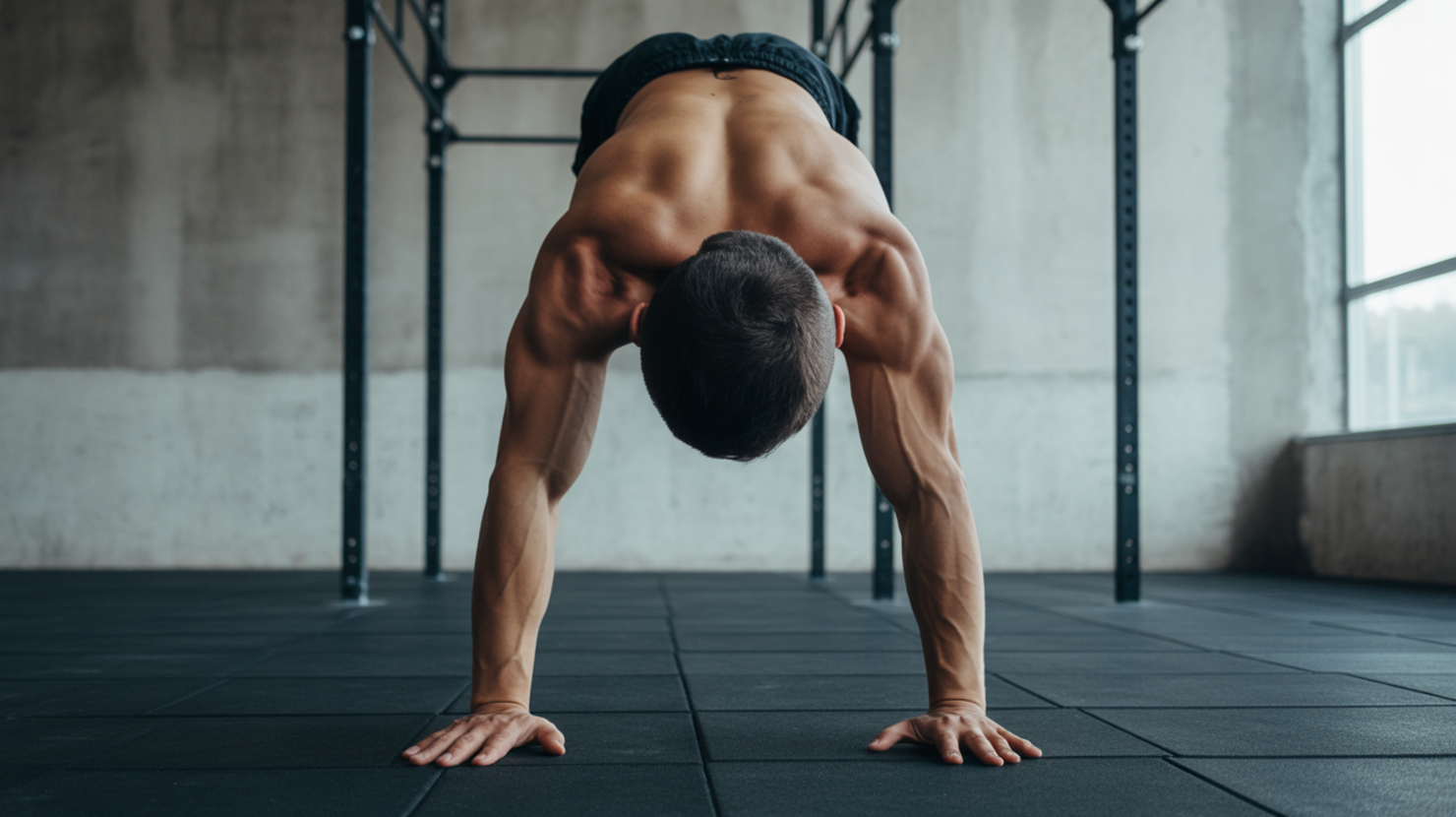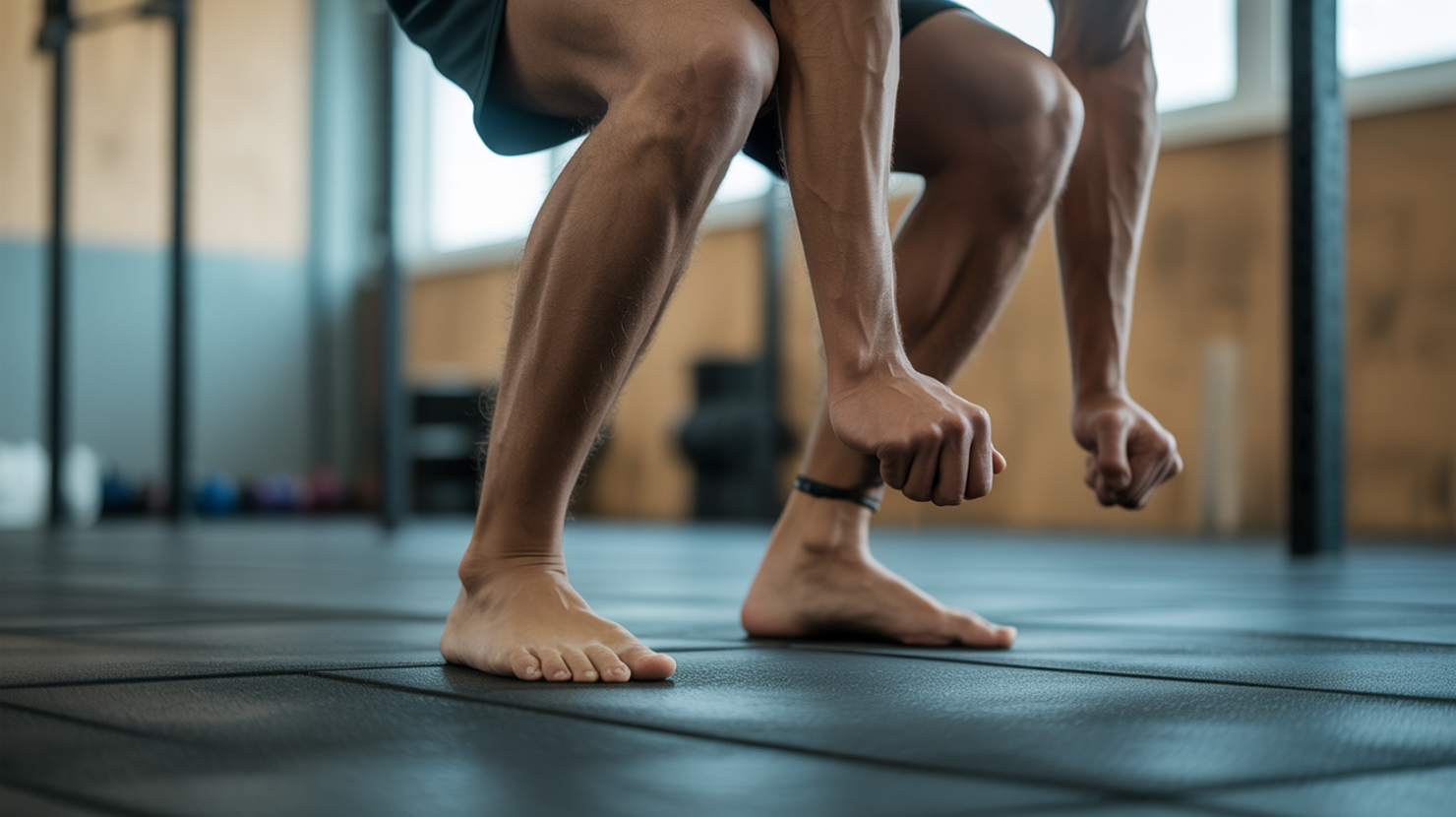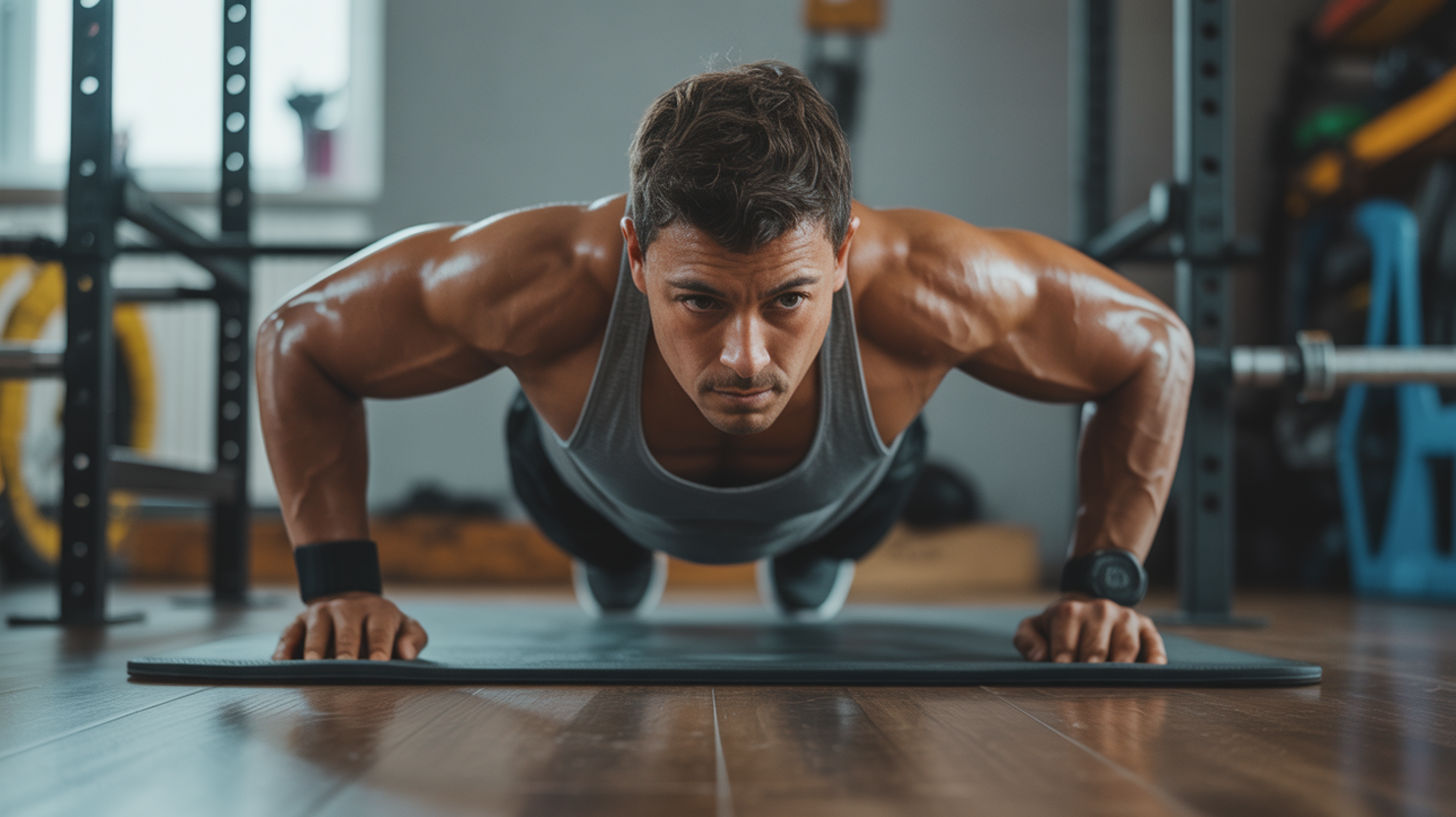The human foot is a marvel of engineering, far more complex than a simple platform for standing. It’s a dynamic structure comprising 26 bones, 33 joints, and over 100 muscles, tendons, and ligaments. Understanding how these components work together is fundamental to unlocking true bodyweight power transfer, particularly when training without restrictive footwear. The foot serves as the primary interface with the ground, and its intricate mechanics dictate how efficiently force is generated and transmitted upwards through the kinetic chain during activities like jumping, running, and lifting.
One of the foot’s most significant features is its arches, particularly the medial longitudinal arch. Far from being merely structural, these arches function remarkably like natural energy springs ✨. As weight is applied during movement (like landing from a jump or pushing off during a stride), the arches flatten slightly, storing potential energy. This stored energy is then released as the foot recoils, adding an elastic component to force production. This spring-like action contributes significantly to the efficiency and power of locomotion and other dynamic movements.
Beyond the large muscles in the lower leg, the foot houses a crucial group known as the intrinsic foot muscles. These are small muscles located entirely within the foot itself. While often overlooked, they play a vital role in stabilizing the arches, controlling the subtle movements of the foot bones, and fine-tuning our balance. Developing strength and control in these muscles enhances the foot’s ability to maintain its dynamic shape, directly contributing to more effective force generation and better absorption of impact, which is critical for powerful and injury-resilient movement. 💪
Finally, the concept of ground reaction force (GRF) is paramount. Every action has an equal and opposite reaction. When your foot pushes against the ground, the ground pushes back with GRF. The efficiency of capturing and transferring this force upwards determines your ultimate power output. Barefoot contact, or training in minimal footwear, allows for a more direct and unfiltered interaction with the ground. This enhances proprioception (your sense of where your body is in space) and facilitates a more natural and powerful transmission of GRF through the foot and ankle, optimizing the kinetic chain for robust power transfer.
By appreciating and training the foot’s complex biomechanics – its spring-like arches, potent intrinsic muscles, and direct interaction with GRF – we lay the essential foundation for enhanced bodyweight power. 🌱
Modern Footwear’s Hidden Performance Limitations 👟
While modern athletic footwear offers valuable protection and cushioning, the very features designed for comfort can paradoxically limit the foot’s natural function and diminish athletic performance, particularly concerning efficient bodyweight power transfer. Understanding these limitations is crucial for appreciating the benefits of integrating barefoot training.
One significant limitation stems from overly cushioned soles. These thick layers isolate the foot from the ground, severely disrupting vital sensory feedback 🧠. Your feet contain numerous nerve endings that constantly send information to your brain about terrain, pressure, and balance. This is known as proprioception. When cushioning deadens these signals, the body’s ability to make instantaneous adjustments for stability and efficient movement is impaired. Imagine trying to balance on a beam while blindfolded – reduced sensory input makes the task much harder. This lack of connection hinders the foot’s capacity to react optimally and contribute effectively to force generation. Learn more about proprioception here.
Furthermore, the design of many modern shoes, even athletic ones, often features a narrow toe box. This constrictive shape prevents the natural spreading or toe splay that is essential for stability during ground contact and powerful push-offs. Your toes should be able to spread wide like the roots of a tree to create a stable base and generate leverage. When confined, they cannot perform this critical function effectively, compromising your ability to grip the ground, absorb impact efficiently, and transfer force powerfully through the kinetic chain.
Finally, reliance on artificial support systems, such as rigid arch supports, motion control features, or stiff shanks, can lead to the weakening of the foot’s own internal support structures. These systems often perform the work that the foot’s intrinsic foot muscles – the small muscles located entirely within the foot – are designed to do. Over time, this reduced demand can result in muscle atrophy, diminishing the strength and responsiveness of these critical stabilizing and force-generating muscles. A foot that is artificially supported loses its natural resilience and power potential.
Foundational Barefoot Movement Patterns ✨
Building a strong foundation is crucial before diving into complex barefoot training. This involves re-learning and refining fundamental human movement patterns that are often inhibited by modern footwear. Focusing on these basic movements barefoot helps re-awaken neglected muscles and sensory receptors in your feet, preparing them for more dynamic work.
One key area is developing dynamic balance on varied surfaces. Practicing simple exercises like single-leg stands, tandem stances (heel-to-toe), and walking heel-to-toe or sideways forces your foot and ankle muscles to constantly make small adjustments. Doing this on different textures – grass, sand, gravel, or even balancing pads – dramatically increases the sensory feedback your feet receive, improving stability and control. This isn’t just about standing still; it’s about your body’s ability to maintain equilibrium while in motion or on unstable ground.
Next, incorporate primitive squat variations to enhance ankle mobility and lower body connectivity. Our ancestors squatted deeply and often; this movement pattern is natural but often lost with prolonged sitting and rigid shoes. Practicing deep squats barefoot, focusing on maintaining a stable arch and allowing the ankles to dorsiflex naturally, is incredibly beneficial. Experiment with different stances (narrow, wide) and depths, always prioritizing form over depth initially. Improved ankle mobility is vital for efficient force transfer from the ground up.
Finally, introduce plyometric landings with a proprioceptive focus. This involves learning to absorb impact effectively and quietly through your feet and ankles. Start small with simple controlled drops from a low step or gentle hops. The goal isn’t height or power initially, but developing the sensitivity and control to land softly and absorb force efficiently. This strong focus on proprioception—your body’s awareness of its position and movement—is paramount. Being able to feel and react to the ground upon landing is a critical skill for preventing injury and maximizing subsequent power output in barefoot activities.
Mastering these foundational barefoot movement patterns lays the groundwork for more advanced training:
- Dynamic balance on varied surfaces
- Primitive squat variations for ankle mobility
- Controlled plyometric landings with proprioceptive focus
By practicing these fundamental movements barefoot, you systematically prepare your feet and ankles for the demands of more advanced barefoot training, unlocking greater stability and natural power transfer throughout your body.
Progressive Foot Strengthening Protocol 💪
Building truly powerful feet isn’t just about random exercises; it requires a structured, progressive approach. Just like any other muscle group, the intrinsic and extrinsic muscles of your feet need specific challenges that gradually increase in difficulty. This targeted training helps build the strength, resilience, and proprioception necessary for enhanced bodyweight power transfer and injury prevention. Here are key components of an effective foot strengthening protocol.
One fundamental exercise for awakening the foot’s intrinsic muscles is the towel scrunch. This seemingly simple drill directly targets the muscles responsible for supporting your arch. Start by placing a towel flat on the floor and using only your toes to scrunch it towards you, then push it away. As you get stronger, increase the difficulty by adding weight to the end of the towel or progressing to single-foot scrunches. This helps improve arch activation and control, crucial for absorbing and redirecting force.
Adding load is the next step. Barefoot carries with offset loading challenge your feet under stress while forcing unilateral stability. This involves holding weight (like a dumbbell or kettlebell) in one hand while walking naturally without shoes or in minimal footwear. The offset load forces the opposite side of your body, including your foot and ankle complex, to work harder to maintain balance and posture. This exercise enhances foot and ankle stability under dynamic conditions and strengthens the foot’s ability to handle uneven forces.
Finally, focusing on controlled movement is vital. Single-leg eccentric lowering sequences build strength through the lengthening phase of muscle action, which is critical for shock absorption and controlled deceleration. Stand on one leg and slowly lower your body as if performing a single-leg squat, taking 3-5 seconds for the lowering phase. You can start with a small range of motion and gradually increase depth as strength improves. This exercise significantly boosts ankle and foot eccentric strength, improving your ability to manage landing forces and prevent injuries during dynamic movements. To understand more about the benefits of eccentric training, consult resources on exercise science principles.
Implement these exercises consistently, starting with easier variations and gradually increasing intensity or complexity. This progressive approach is key to building a stronger, more functional foundation in your feet and unlocking your body’s full potential for efficient power transfer from the ground up.
Key Progressive Strengthening Exercises:
- Towel Scrunches (for intrinsic muscle activation)
- Barefoot Carries with Offset Loading (for dynamic stability under load)
- Single-leg Eccentric Lowering (for controlled strength and shock absorption)
Transition Safely to Barefoot Training 🐢
Transitioning to barefoot training isn’t just about shedding your shoes; it’s a fundamental shift that requires careful planning and patience. Your feet have spent years, maybe decades, cushioned and supported by modern footwear. Suddenly exposing them to the full demands of ground contact can overload tissues like the plantar fascia, intrinsic foot muscles, and bones. This is why a gradual exposure timeline is absolutely crucial for tissue adaptation. Think of it as strength training for your feet – you wouldn’t lift your maximum weight on day one. Start with very short durations on forgiving surfaces, perhaps just a few minutes of walking, and slowly, very slowly, increase the time and intensity as your feet grow stronger and more resilient. Consistency over speed is key to building lasting resilience.
The surface you train on plays a massive role in the stress placed on your feet. A smart surface selection hierarchy is your friend in this transition. Begin on soft, natural surfaces like grass or sand. These provide cushioning and allow your feet to adapt with less impact while still engaging the necessary muscles and proprioceptors. As your feet get stronger and more comfortable over several weeks, progressively move to slightly firmer surfaces such as dirt trails or rubber tracks. Only after significant time and adaptation on these surfaces should you consider training on harder, unforgiving surfaces like concrete or asphalt. Rushing this step is a common mistake that can lead to pain and injuries. Always listen to your body; any sharp or persistent pain is a clear sign to back off and potentially revert to softer surfaces or shorter durations.
While general guidelines are helpful, everyone’s feet are unique. Factors like arch height, past injuries, gait patterns, and current foot strength vary significantly. This is where tools like foot scan assessments can be incredibly valuable for informing your transition. Services or specialists offering detailed foot analysis can provide insights into pressure distribution, potential imbalances, and structural characteristics specific to you. This information allows for genuinely individualized pacing and protocol design. Understanding your specific foot mechanics helps tailor the transition, highlighting areas that might need extra attention or warrant a slower progression than general recommendations. Resources like the American Podiatric Medical Association (https://www.apma.org/) offer information on foot health and finding specialists who might provide such assessments. Taking a personalized approach based on data significantly reduces the risk of setbacks and helps build a truly robust foundation for barefoot training.
Sport-Specific Power Transfer Enhancements 🏃
Beyond general strength and mobility, training for enhanced foot power can directly translate to improved performance in specific athletic movements. By optimizing the foot’s interaction with the ground, athletes can unlock greater power potential precisely where it’s needed most. This isn’t just about having strong feet; it’s about teaching the feet to efficiently capture and redirect ground reaction forces through the entire kinetic chain.
In basketball, a powerful vertical jump starts with the feet. The ability of the foot arch to act as a natural spring, coupled with strong intrinsic foot muscles, allows for a faster and more forceful push-off. Enhancing barefoot foot strength helps athletes generate explosive power from a stable base, improving not only jumping height but also quick directional changes and agility on the court. Understanding the biomechanics of the vertical jump, which heavily relies on efficient force transfer from the ground, is key.
For martial artists, optimizing kicking power involves more than just hip and leg strength. The foot and ankle play a critical role in stabilizing the base during the kick and transferring rotational force generated higher up the body. Strong, agile feet with good proprioception allow for precise foot placement and a stable platform to launch strikes, ensuring that the force generated isn’t dissipated but efficiently channeled into the target. Proper kicking mechanics depend on this fundamental foot strength.
Sprinting acceleration is perhaps one of the most direct beneficiaries of powerful feet. The toe-off phase is where significant propulsion occurs. A strong, flexible foot capable of maximizing force production during this crucial moment can significantly impact acceleration. Strengthening the muscles responsible for forefoot push-off and ensuring efficient energy transfer through the foot’s structure is paramount for increasing stride power and overall speed. The mechanics of sprinting highlight the foot’s role as the primary point of contact and force generation.
By focusing on the foot as the foundation of athletic power transfer, athletes can see measurable improvements in these specific, high-impact movements. Tailoring foot training protocols to the demands of a sport can provide a competitive edge.
Foot-Centric Recovery and Maintenance 🛀
Effective recovery is just as vital as the training itself for building powerful feet. Dedicated foot recovery protocols ensure longevity, prevent overuse issues, and maintain the enhanced function gained from your training efforts. Proper recovery supports tissue repair, reduces stiffness, and keeps the intricate structures of your feet resilient and ready for performance, acting as a robust foundation for bodyweight power transfer.
One cornerstone of effective foot recovery involves self-massage techniques. Using textured tools like massage balls or specialized foot rollers can help release tension in key areas like the plantar fascia, intrinsic foot muscles, and connecting calf muscles. Spend time rolling out the arch, heel pad, and ball of the foot, applying moderate pressure to address areas of tightness or soreness. Consistent self-massage can significantly improve blood flow, reduce fascial restrictions, and alleviate accumulated stress from weight-bearing activities and barefoot training.
Equally important are specific mobility drills targeting the feet and ankles. Maintaining good range of motion in the many small joints of the foot, particularly focusing on metatarsal articulation (the controlled movement of the bones in the forefoot), is vital for optimal impact absorption and efficient force generation. Simple drills such as toe splay and scrunch, controlled ankle rotations, or actively lifting and lowering individual toes can enhance the flexibility, control, and overall health of the foot’s complex joint system. These drills help counteract stiffness and promote natural, fluid foot mechanics.
Finally, don’t underestimate the power of internal support achieved through strategic hydration strategies 💧. Adequate water intake is absolutely essential for the health and elasticity of fascia and other connective tissues throughout your entire body, including the intricate, load-bearing network within your feet. Well-hydrated fascia is more pliable, less prone to stiffness or injury, and recovers more efficiently after stress. Making sure you are consistently well-hydrated supports the structural integrity and optimal function of your feet at a fundamental, physiological level.
Implementing these foot-centric recovery and maintenance practices alongside your training is crucial for anyone serious about long-term foot health and maximizing the benefits derived from progressive barefoot training protocols.
Key Recovery Practices:
- Self-Massage Techniques: Utilize textured tools for myofascial release and tension relief.
- Mobility Drills: Focus on enhancing metatarsal and overall foot joint articulation and control.
- Hydration Strategies: Prioritize adequate water intake to support fascial elasticity and tissue recovery.
By dedicating consistent time and attention to these recovery methods, you ensure your feet remain strong, mobile, and pain-free, serving as the powerful, adaptable foundation required for optimal bodyweight power transfer.












